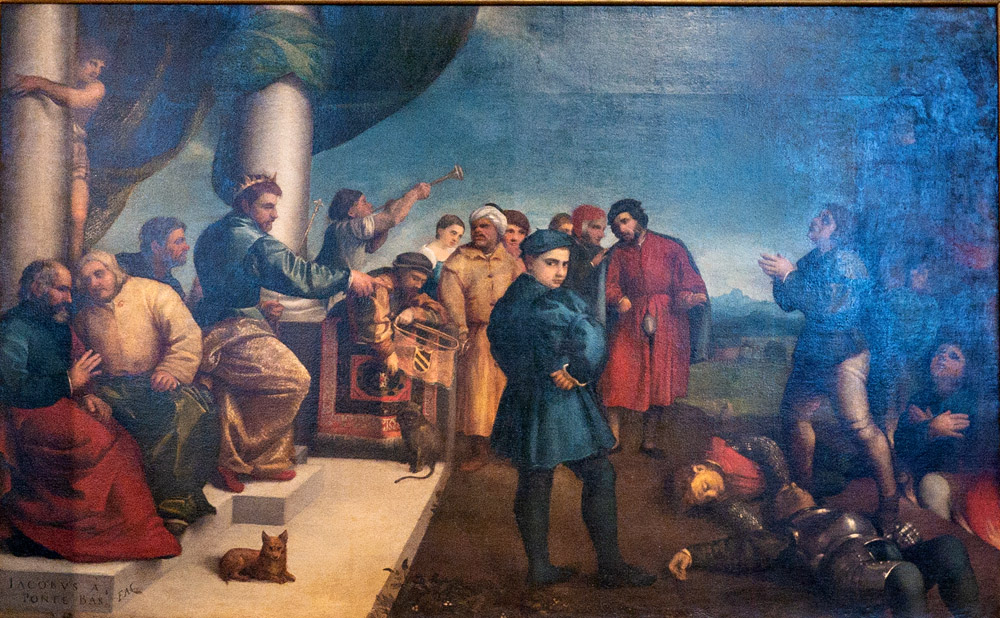Jacopo Bassano (Jacopo Da Ponte), Shadrach, Mishach, and Abednego in the Fiery Furnace

1536
Oil on canvas
Museo Civico, Bassano del Grappa, Italy
The story of the three youths is told in Daniel 3:8-23. The background of the painting illustrates the announcement to the people of Nebuchadnezzar's order that "in the hour that you shall hear the sound of the trumpet…ye fall down and adore the golden statue which king Nabuchodonosor hath set up" (Daniel 3:5). It was for disobeying this order that the three Hebrew youths were cast into the fiery furnace that we see on the right.
The rest of the painting illustrates the moment when Nebuchadnezzar has realized that the furnace has not harmed the youths at all. Consequently he calls them to come out (Daniel 3:93). On the left, the king's gesture represents this call. On the right the youths do indeed step out of the furnace.
The two men in the left foreground appear to represent the "great men of the king being gathered together" who "considered these men, that the fire had no power on their bodies" (Daniel 3:94). The seriousness of their discussion is echoed by the dog at their feet, a symbol of fidelity. The two "great men" and the dog are in contrast with the two trumpeters and the monkey at the other end of the dais, the monkey being a traditional symbol of the devil.1
In the right foreground the men lying dead on the ground are those whom flames leaping from the furnace had set on fire (Daniel 3:47-48).
The young man in blue returning the viewer's gaze from the center of the painting is most likely Daniel himself, who at the time was a favorite of the king and had persuaded him to put the three youths in charge of the province of Babylon (2:49).
The author's signature, Iacobus a Ponte Bas Fac, is in the lower left corner, on the dais.
View this image in full resolution.
Read more about images of Shadrach, Mishach, and Abednego.
Photographed at the museum by Richard Stracke, shared under Attribution-NonCommercial-ShareAlike license.